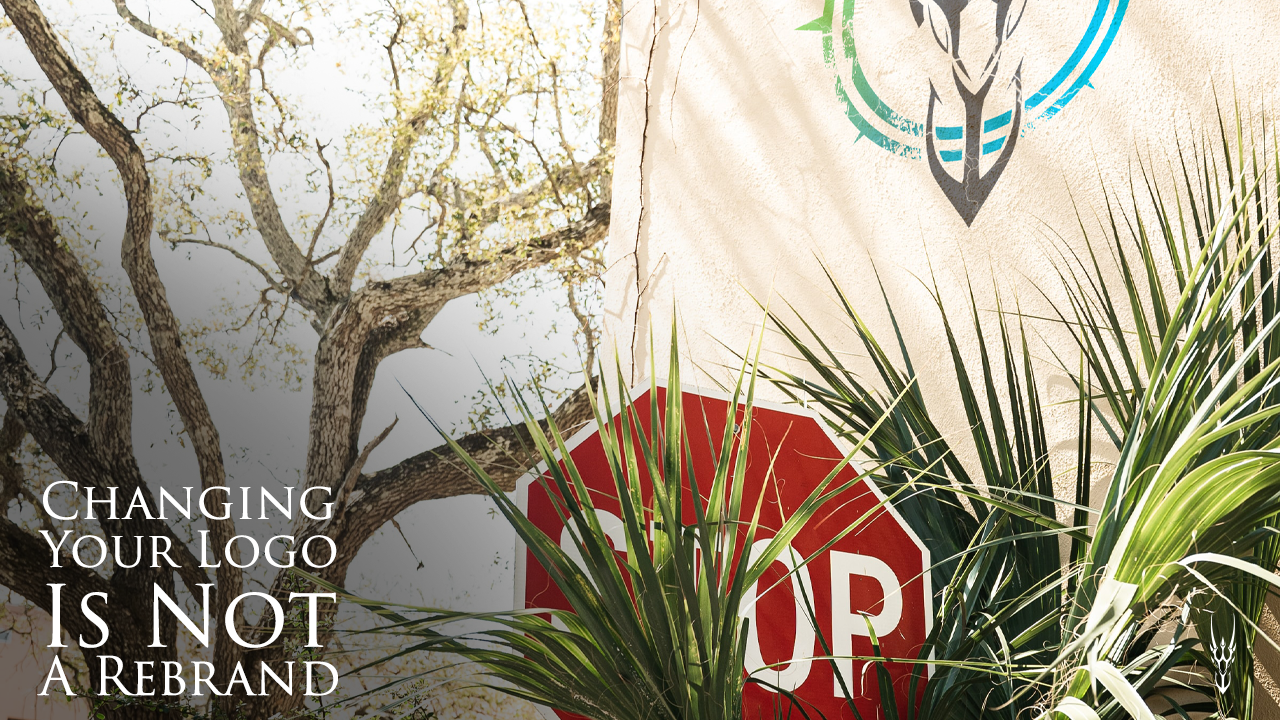I feel like this one needs to be said in a slightly more direct manner than usual. Changing your logo is not a rebrand.
Glad I got that off my chest. Thanks for coming to my Ted Talk.
Oh, you wanted more? Well, I guess I could delve a little deeper.
Why are you changing your logo?
Why is the big question for most branding exercises and this one is no exception. There are a huge number of reasons to change your logo, from it being outdated to reflecting a fundamental change in your business. Changing the business name is a huge reason for changing your logo. In all of these instances, there’s a requirement for change, and the logo seems like the best place to start, right?
Well, yes and no.
It’s true that the logo is a central part of your brand identity, but it’s not everything. On it’s own, it can’t really do a lot. But changing the logo without thinking about why the brand needs it now, and how this will interact with the rest of the brand, is a recipe for disaster. For example, if you change some colours in the logo, how would that look against the existing brand palette? Although the new logo may look great, it could clash with the rest of the brand identity. The resulting clash could confuse your brand message or tone. Additionally, it could confuse clients and make them turn away from the brand.
Just changing the logo also doesn’t take into account strategy. And at it’s worst, its a purely egoistical exercise that doesn’t take into account the complex reasons behind a rebrand.
What is a rebrand?
Rebrands are not purely visual. This is an important first point to get across. Though the end results often have a visual element (the visual brand identity), there is a lot more under the surface. Just changing a logo ignores all of this and assumes that everything that came before was fine. Ultimately, this ignores the purpose of a rebrand – to better connect with an audience. As such, a rebrand is based around getting reacquainted with your target audience, asking questions and making sure what you produce is aligned with their desires and needs.
A great rebrand asks questions before providing answers. This lets the designer know how to create something that will resonate with the desired audience.
Rebrands also cover a lot more ground than just changing your logo. The rebrand will ask where your clients interact with and design a plan for which assets are required. This is a major difference as it looks ahead and forms a strategy. Your rebrand may need a website, social media, print media, advertising and even a change in tone and copy. This simply can’t be covered by just changing the logo. Ultimately, a good rebrand looks at the past, present and future, something that a quick logo update can’t cover.
Which do you need?
Here’s the big question and it can sometimes be difficult to tell. Sometimes, a little update to the logo can the main thing you need – this is often the case in modernising, such as when Pringles recently rebranded Mr. P. In this case, a lot of the brand stayed the same or similar, and the main aim was to modernise the mascot for a digital age. At other times, the entire brand needs to be looked at from the ground up. This is especially important during times where markets shift.
Though there are no hard and fast rules as to which you need, it can help to look at your brand alignment. If you take the time to understand whether you’re still on mission and have the same values, it can help uncover if you need to change the whole brand or just update the logo. This can involve getting a brand strategist to check if you’re on track. But it could just mean reminding yourself of your ‘why’ and making sure your brand is still aligned. Modernising the logo may be preferable if the strategy is the same, but the logo is a little dated.
Some tips for changing your logo
As with any change in business, there are a few things to think about when modernising your logo:
- Think about your audience – even when just modernising, it’s still important to think about how your audience will react, and what feelings you want to get across.
- Get it done properly – make sure you hire a great designer to make the changes, and ask for vector formats as well as different versions that will work on a variety of backgrounds.
- Get appropriate feedback – you may not have access to focus groups, but asking people for feedback can uncover things you may have missed. Just make sure to ask appropriate people, preferably within your target demographic.
- Remember to change it across all platforms – as the logo is what people associate with your brand, try to change it all at the same time. Make a list of everywhere your logo shows up and plan a day that the new logo will go live.
Changing your logo is NOT a rebrand
Most importantly, remember that changing your logo is NOT a rebrand. Not on it’s own, anyway. A logo change is just visual, while a rebrand is strategic and much deeper. The main thing that people get wrong about the term,’ rebrand’ is to think it’s entirely about how the brand looks, when it’s more about how it feels. The logo and visual identity will be important in this, but cannot happen without proper strategy and understanding of what the brand is. Values, mission, tone and character are all vital to understand before a rebrand can take place.
Without understanding these, you’re not rebranding. You’re having a facelift.
Is it time for you to rebrand? If so, click the button below to book a discovery call.






